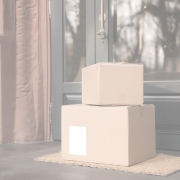While the Covid era is still very much in evidence – just ask the residents of Shanghai – its effects are now receding in most of the world’s major markets. This week, the wine world met again at ProWein, for the first time since 2019, and unsurprisingly the main topic of conversation was taking stock of a two year period of trading unlike any other in our lifetimes.
It’s a mixed picture. In 2020 key consumption markets, such as the US, the UK, Germany, and the Scandinavian countries, actually saw wine volumes and spending rise. Mediterranean markets such as France, Italy and Spain, heavily dependent on on-premise consumption, saw wine volumes fall. Emerging markets, also dependent on restaurants and bars, also saw precipitous declines.
Amongst many of the conversations taking place in the corridors at ProWein 2022, supply chain and inflation concerns were prominent, particularly for a globally-traded product such as wine. A more worrying long-run trend, which was given new impetus by the pandemic, was the loss of younger legal drinking age (LDA) consumers from the wine category. Many producers and retailers are crossing their fingers that the return of bars and restaurants to near-normal operations in 2022 will also bring younger LDA consumers back to wine. Less optimistic industry leaders worry that the combination of moderation trends in major markets, and the lure of more exciting and well-marketed categories such as spirits and ready-to-drink cocktails, spells a period in the wilderness for wine, even once the supply chain and costs crunch passes.
E-commerce remains the one major silver lining for the wine category. As has been widely documented, online retail was the big winner of the Covid era, and within the alcohol space particularly, fuelled by restrictions in bricks and mortar retail, and lack of going out opportunities. Wine was well-placed to benefit, having moved earlier and more aggressively into e-commerce thanks to its long heritage of mail-order wine clubs dating back to the 1970s in many markets.
Alcohol e-commerce volumes and value are forecast to continue to grow post pandemic, according to IWSR, and wine is well placed within this world, over-indexing for online volumes compared to the total trade. The audience of wine e-commerce buyers also continues to expand despite the end of Covid, according to the Wine Intelligence Wine E-Commerce 2022 Strategic Report, published this week.
Online wine buyers are more likely to be younger, higher income and urban and are more frequent wine drinkers. While website-based ordering still dominates in most markets, the most exciting area of growth is in wine ordering from smartphone-based apps. The standout markets here are China and Brazil, with the latter market having taken off dramatically thanks to Covid, and thanks to successful local distribution businesses adapting fast to the challenges of Covid.
Ordering via an app is also generally the province of younger LDA+ consumers, the very people that the wine industry is desperate to reconnect with. So the fact that wine is already strong in this channel, with a number of retailers and intermediaries that already have well-established business models and logistics chains, should bode well for the wine category.
If a golden opportunity exists for wine within e-commerce, can the wine industry grasp it? As we wrote last year, wine e-commerce used to be a bit of a cottage industry prior to Covid. The original business plan was that e-commerce was only of interest to a more involved segment of the wine drinking population, for whom the selection on the supermarket shelf might not be sufficient, and would be driven more by certain occasions – ie Christmas or a special dinner party.
As a result of the pandemic, wine e-commerce has become a more mainstream product in multiple markets, and its user base has expanded from the 10-20% of engaged, discovery-oriented wine drinkers towards a wider population who like wine and buy it regularly, but aren’t always bothered with all the intellectual stuff that might accompany it. The leap in connection and usage of e-commerce among wine drinkers was the big story of 2020-21, the story of the past year is that this wider audience appears to have kept the wine e-commerce habit. The proportion of consumers who bought wine online in the past 6 months has stabilised in most markets, but remains in growth in key volume markets such as US, Germany and China. Across the 13 markets measured by the E-commerce Strategic Report 2022, 4 in 10 consumers said they bought online. Encouragingly, a quarter of those surveyed said they did not buy wine online but would consider doing so in future.
The new challenge for wine e-commerce is evident in the recalled purchase data measured by Wine Intelligence. Purchasing via a smartphone app remains a lower incidence activity in most markets versus traditional web-based ordering. However when app-ordering does happen, it looks different from the by-the-case home delivery model that wine pioneered in the mail order era of 50 years ago. Consumers in app-dominant markets appear to be ordering more frequently, at higher value, but with lower quantities – typically less than 6 bottles per order. App user demands are also different: they want to receive their wine fast, and within a specified delivery time. For this extra service, they are willing to pay more.
The ability of existing online wine retail operations to adapt their formula to this new set of consumer needs will determine whether the wine industry’s head start in e-commerce will be maintained. The good news is that the main consumer groups who are being recruited into app-based wine e-commerce are drawn from younger, well-educated and urban consumers, who represent the long-term profitability of the global industry but went missing during the pandemic. The worry for the industry is that it will lose out to better-funded, later-to-market e-commerce operations being built by beer, RTD and spirits producers, all anxious to get traction in this high value channel of the future.
The lesson for major players in wine is therefore around focusing attention on how to serve this new consumer need. As with all good strategic discussions, it should start with the consumer journey, and some tough questions. Will the Brooklyn-based twenty-something selecting drinks for their low-key social evening use their Drizly app to select a magnum of branded Provence rose, or multipack of RTDs, or maybe a bottle of premium tequila? How does wine win in this setting? What needs to change about the product, or the way it is packaged, or marketed? Does a long spiel about terroir and tasting notes have any role to play, or are other selling lines more important? What information is pertinent, but supporting, and what will win the order?
You may also be interested in reading:
- Why has our relationship with wine changed in the Covid-era?
- Which key macro factors are driving the global wine industry in 2021?
- Millennials drive the sparkling wine category





Leave a Reply
Want to join the discussion?Feel free to contribute!